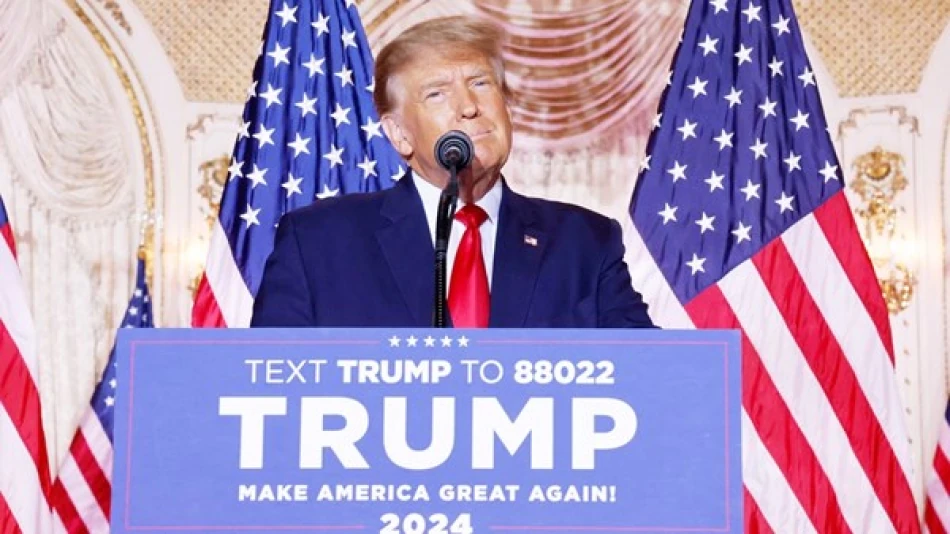
ترامب: قد أقرر عدم الترشح للرئاسة مجددًا
Trump Hints at Possible Exit from 2028 Race Before Backtracking on Presidential Ambitions
President Donald Trump briefly suggested he might not seek re-election in 2028 during a recent interview, only to later reaffirm his interest in running again. The comment highlights the constitutional complexities surrounding Trump's unique position as the first president to serve non-consecutive terms since Grover Cleveland, while also revealing his immediate focus on securing Republican advantages in upcoming midterm elections through aggressive redistricting efforts in Texas.
Constitutional Limits Create Unprecedented Scenario
Trump's wavering on a 2028 bid underscores a rare constitutional situation. The 22nd Amendment limits presidents to two four-year terms, whether consecutive or separate, meaning Trump would be constitutionally barred from seeking a third term after completing his current presidency. This makes him the first president since the amendment's ratification in 1951 to face such restrictions after serving non-consecutive terms.
The uncertainty in Trump's initial response suggests even he may be grappling with the political calculus of his final term. Historical precedent shows lame-duck presidents often struggle with diminished influence, but Trump's unique political brand and base loyalty could alter traditional second-term dynamics.
Strategic Focus Shifts to Congressional Power
Texas Redistricting as Political Priority
Rather than dwelling on 2028 speculation, Trump has pivoted to immediate tactical concerns: maximizing Republican representation through redistricting. His defense of GOP efforts to redraw Texas congressional maps ahead of the 2026 midterms reveals a calculated strategy to cement long-term political advantages.
In his CNBC interview, Trump emphasized his strong Texas performance, claiming "the highest vote percentage in Texas history" and arguing this success justifies gaining "five additional seats" through redistricting. While the vote percentage claim requires verification, Trump did significantly outperform previous Republican margins in the traditionally red state.
Midterm Mathematics
The focus on Texas redistricting reflects broader Republican concerns about maintaining congressional control. With slim majorities historically vulnerable in midterm elections, securing additional safe seats through favorable map-drawing could prove crucial for Trump's legislative agenda. Texas, having gained congressional seats following the 2020 census, presents the largest redistricting opportunity for either party.
Political Implications Beyond 2028
Trump's mixed signals on future campaigns may actually strengthen his current position. By maintaining ambiguity about 2028 while focusing on immediate political gains, he avoids lame-duck status while positioning Republicans for sustained power regardless of his personal political future.
This approach mirrors successful political leaders who maximize their influence by keeping opponents guessing about their long-term intentions. The redistricting emphasis suggests Trump recognizes that lasting political change requires institutional advantages beyond individual campaigns.
For Republicans, Trump's strategy offers a pathway to maintain influence even after his constitutionally mandated exit from presidential politics, while Democrats face the challenge of opposing redistricting efforts backed by a president who demonstrably carries significant weight in key states like Texas.
Most Viewed News

 Layla Al Mansoori
Layla Al Mansoori






